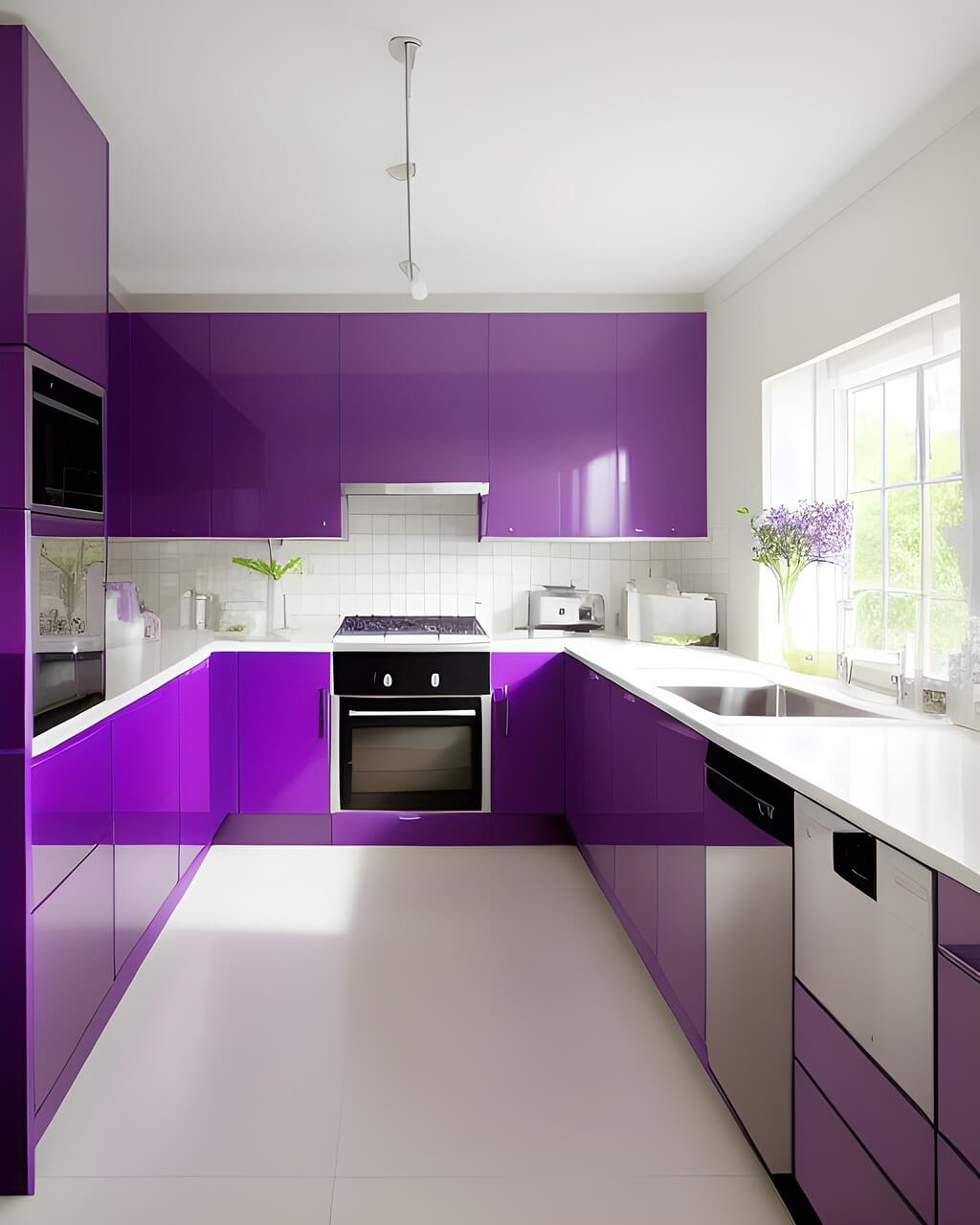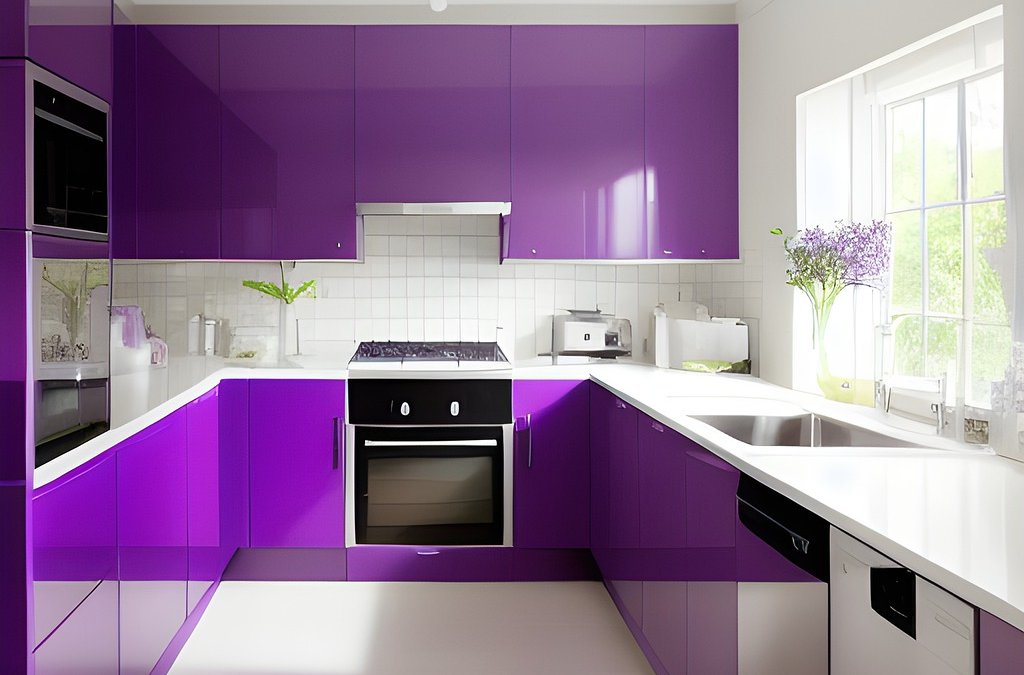
When designing a functional family kitchen, there are many factors to consider. From the flooring to the appliances, every detail matters. One important choice is whether to install cabinets or cupboards. While they may seem interchangeable, some key differences between these two storage solutions are worth considering. Cabinets and cupboards have unique benefits and drawbacks; understanding these factors is helpful in making an informed decision. This article explores the key differences between kitchen cabinets and cupboards and helps you choose the best option. Whether you’re renovating an existing kitchen or building a new one, this post will offer you helpful information and tips for making the right choice. So let’s explore the world of kitchen storage!
Defining kitchen cabinets and cupboards
Before we dive into the differences between cabinets and cupboards, it’s important to understand what each term means. Kitchen cabinets are typically built-in units mounted on the wall and used to store dishes, glasses, and other kitchen items. They are typically made from wood or engineered wood and may feature doors or drawers for easy access. On the other hand, cupboards are standalone pieces of furniture used for storage. They are typically larger than cabinets and may be made from various materials. They can be wood, metal, or plastic. Cupboards may feature doors, drawers, or shelves and are often used to store larger items like pots and pans.
In general, cabinets are designed to be more aesthetically pleasing than cupboards and are often used to showcase fine china or other decorative items. On the other hand, cupboards are more useful and are designed and produced to be functional rather than decorative.
History of kitchen cabinets and cupboards
Using cabinets and cupboards in the kitchen dates back hundreds of years. In medieval times, kitchens were typically small and cramped, and storage space was at a premium. Cooks often hang pots and pans from the ceiling to maximize space or store them in wooden cabinets or cupboards. These early storage solutions were often crude and useful and were designed primarily for function rather than form.
Over time, kitchen storage solutions became more sophisticated, and cabinets and cupboards evolved to meet the changing needs of cooks. During the Renaissance, for example, cabinets became more ornate and decorative and were often used to showcase fine china and other decorative items. In the 18th and 19th centuries, cupboards became more common in kitchens and were often used to store larger kitchen items like pots and pans.
Today, kitchen cabinets and cupboards come in many styles and materials and can meet the needs of modern cooks. From sleek and modern cabinets made from engineered wood to rustic cupboards made from reclaimed wood, there is a kitchen storage solution to suit every taste and budget.
Kitchen cabinet materials
Kitchen cabinets have many material options, each with unique advantages and disadvantages. Materials commonly used in kitchen cabinets include:
Wood: Wood is a popular and classic choice for kitchen cabinets, as it is durable, versatile, and can be stained or painted. Wood cabinets can easily match any design aesthetic. Some popular types of wood used in kitchen cabinets include oak, maple, cherry, and birch.
Engineered wood: It is a composite material made from wood fibres and resins. It is good for making kitchen cabinets because it is less costly than solid wood and is more resistant to warping and cracking.
Metal: Metal kitchen cabinets are a popular choice for modern kitchens, as they are sleek, durable, and easy to clean. Stainless steel is one commonly used metal type in kitchen cabinets, but other metals like copper and brass can also be used in accessories and hardware to create a unique look.
Kitchen cupboard materials
Like kitchen cabinets, cupboards can be made from a variety of materials. Some common materials used in kitchen cupboards include:
Wood: Wooden cupboards are a popular choice for traditional and rustic kitchens. They are durable and can match any design aesthetic.
Metal: Metal cupboards are a popular choice for modern kitchens, as they are sleek and durable. Stainless steel is also commonly used in kitchen cupboards, and copper and brass are also used to create a unique look.
Plastic: Plastic cupboards are a popular choice for budget-conscious homeowners. They are easy to clean, lightweight, and come in various colours and styles.
Kitchen cabinet styles
Kitchen cabinets come in various styles, each with its unique look and feel. Some popular styles of kitchen cabinets include:
Shaker: Shaker cabinets are simple and functional, featuring a flat panel design with minimal ornamentation. They are a popular choice for creating traditional and modern kitchens.
Raised panel: Raised panel cabinets feature a raised panel design on the door fronts and are often used in traditional and formal kitchens.
Flat panel: Flat panel cabinets feature a simple, flat design without ornamentation. They suit modern and contemporary kitchens.
Glass front: Glass front cabinets feature glass panels on the door fronts and are often used to showcase decorative items or fine china.
Kitchen cupboard styles
Like kitchen cabinets, cupboards come in a wide variety of styles. Some of the most popular kitchen cupboard styles include:
Hutch: A hutch is a cupboard with a display cabinet on top and a storage cabinet on the bottom. They are often used in traditional and country-style kitchens.
Pantry: A pantry cupboard is a tall, narrow cupboard for storing food and other supplies. They are a popular choice for modern kitchens with limited storage space.
Armoire: An armoire cupboard is a large, freestanding piece of furniture used for storing various kitchen items. They are often used in traditional and rustic kitchens.
Pros and cons of kitchen cabinets and cupboards
When choosing between kitchen cabinets and cupboards, there are pros and cons. Some of the key advantages of kitchen cabinets include:
- Aesthetically pleasing design
- Easy access to stored items
- Customizable design options
Some of the key disadvantages of kitchen cabinets include:
- More expensive than cupboards
- Limited storage space
Some of the key advantages of kitchen cupboards include:
- More affordable than cabinets
- Larger storage space
Some of the key disadvantages of kitchen cupboards include:
- Less aesthetically pleasing than cabinets
- Less customizable design options
Cost differences between kitchen cabinets and cupboards
One of the biggest differences between kitchen cabinets and cupboards is the cost. In general, cabinets are more expensive than cupboards due to their more complex design and construction. HomeAdvisor says the average cost of kitchen cabinets ranges from $4,000 to $13,000, while the average cost of kitchen cupboards ranges from $1,000 to $5,000.
However, the total cost of kitchen cabinets and cupboards can vary widely depending on factors, including the materials used, the kitchen’s size, and the design’s complexity. To get an accurate quotation of the cost of your kitchen storage solution, it’s best to inquire about a professional kitchen cabinet manufacturer.
Conclusion
When choosing between kitchen cabinets and cupboards, there is no one-size-fits-all solution. It is better to consider your budget, design aesthetic, and storage needs, and then you can make the right choice for your kitchen. By understanding the differences between these two storage solutions, you can make a good decision that will help bring a dream kitchen come true. So whether you opt for sleek and modern cabinets or traditional and rustic cupboards, you can rest assured that you’ve made the right choice for your home.
Ava Clarkson
Related posts
Stay connected
- How LoveOn Chat Is Becoming the Most Versatile AI Companion for Digital UsersThe internet keeps shifting toward hyper-personal interaction, and AI companions are at the center of this shift. What used to be simple chatbots are now evolving into emotionally aware, adaptive, and multi-functional digital partners. Among the new generation of platforms, LoveOn Chat is becoming one... The post How LoveOn Chat Is Becoming the Most Versatile […]

